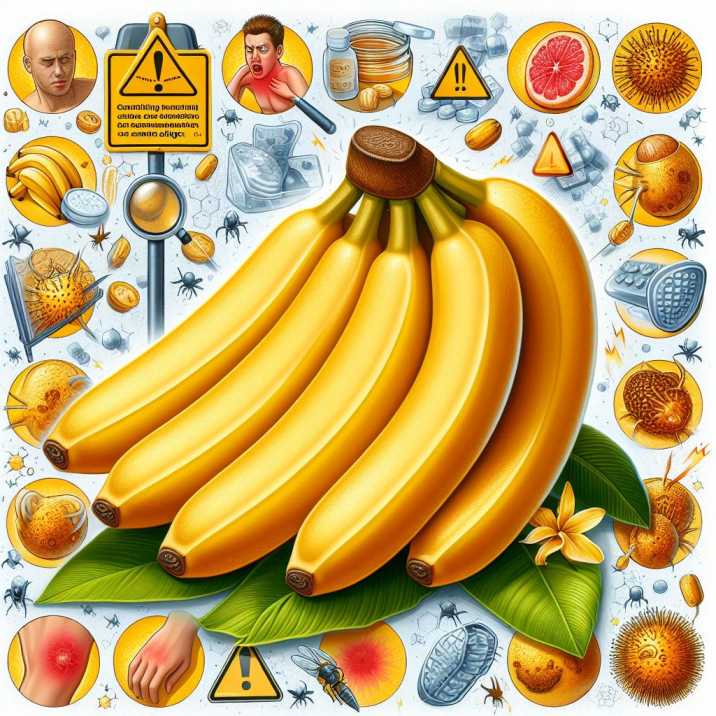Cavendish bananas, known for their rich taste and creamy texture, are a popular fruit enjoyed by millions worldwide. However, like any food, consumption of Cavendish bananas may lead to allergic reactions in some individuals. In this article, we delve into common allergies and reactions associated with consuming Cavendish bananas, shedding light on potential risks and providing valuable insights for readers.
Understanding Cavendish Bananas
Table of Contents
Cavendish bananas, scientifically known as Musa acuminata ‘Cavendish’, are a cultivar of the banana species Musa acuminata. These bananas are characterized by their sweet flavor, firm texture, and yellow peel when ripe. They are widely cultivated in tropical regions across the globe and are a staple in many diets.
Allergies and Reactions
While Cavendish bananas are generally safe to eat, some individuals may experience allergic reactions upon consumption. These reactions are typically mild but can sometimes be severe in certain cases. It’s essential to be aware of these potential allergies and reactions to ensure one’s well-being.
Common Allergies
- Latex Allergy: Individuals with a latex allergy may also be sensitive to certain proteins found in Cavendish bananas. This cross-reactivity can lead to itchy mouth, hives, or even anaphylaxis in severe cases.
- Oral Allergy Syndrome (OAS): Some people may experience OAS when consuming Cavendish bananas. This condition manifests as itchiness or swelling in the mouth, lips, or throat due to the body’s reaction to certain proteins in the fruit.
Key Noted Important Points:
- Cavendish bananas are a cultivar of the banana species Musa acuminata.
- Latex allergy sufferers may experience reactions to certain proteins in Cavendish bananas.
- Oral Allergy Syndrome (OAS) can cause itchiness or swelling in the mouth, lips, or throat.
Precautions and Management
If you suspect you have an allergy or sensitivity to Cavendish bananas, it’s crucial to take appropriate precautions. Consider the following:
- Consult a Healthcare Professional: If you experience symptoms after eating Cavendish bananas, consult with a doctor or allergist for proper evaluation and management.
- Avoidance: If you have a known allergy to Cavendish bananas or related foods, it’s best to avoid consuming them altogether to prevent reactions.
- Read Labels: Be vigilant when purchasing processed foods as they may contain banana derivatives, which could trigger allergic responses in sensitive individuals.
Conclusion
In conclusion, while Cavendish bananas are a delicious and nutritious fruit enjoyed by many, it’s essential to be aware of potential allergies and reactions associated with their consumption. By understanding these risks and taking necessary precautions, individuals can continue to enjoy Cavendish bananas safely.
FAQs
- Can Cavendish bananas cause allergic reactions?
- Yes, some individuals may experience allergic reactions to Cavendish bananas, especially if they have latex allergies or oral allergy syndrome (OAS).
- What are the symptoms of a Cavendish banana allergy?
- Symptoms may include itching or swelling in the mouth, lips, or throat, hives, or in severe cases, anaphylaxis.
- How can I manage a Cavendish banana allergy?
- Management involves avoidance of Cavendish bananas and related foods, consulting a healthcare professional for proper evaluation, and reading food labels carefully.
- Are there alternative banana varieties for individuals with allergies?
- Yes, individuals with Cavendish banana allergies may consider alternative varieties such as plantains or red bananas, but it’s essential to consult with a healthcare professional.
- Can cooking Cavendish bananas eliminate allergic reactions?
- Cooking Cavendish bananas may reduce the risk of allergic reactions for some individuals, but it’s not guaranteed. It’s best to consult with a healthcare professional for personalized advice.

